-
Destinations

Top Destinations
Countries in Southern Africa
-
Our Private Tours

-
Safari Experiences

Popular Types
Safaris by Country
- Find a Trip
- About Us
- Start Planning
Those who travel to Zambia normally do so to visit the mighty Victoria Falls, which occurs in the Zambezi River that separates the countries of Zambia and Zimbabwe. The country also offers several pristine national parks, notably Lower Zambezi and South Luangwa, where you can enjoy exceptional luxury safaris.
Need Advice?Zambia is one of the best travel destinations on the African continent to enjoy a safari vacation reminiscent of yesteryear.
Victoria Falls is one of the most awe-inspiring natural destinations worldwide.
Abundant wildlife and birdlife on the northern banks of the Zambezi River make this national park one of Zambia's top safari destinations.
A substantial hippo population and the opportunity to view the rare Thornicrofts giraffe make this conservation area unique.
Kafue is the oldest and one of Zambia's most revered national parks for a safari in a truly unspoiled wilderness.
This small national park protects sections of rainforest and riverfront adjacent to the mighty Victoria Falls.
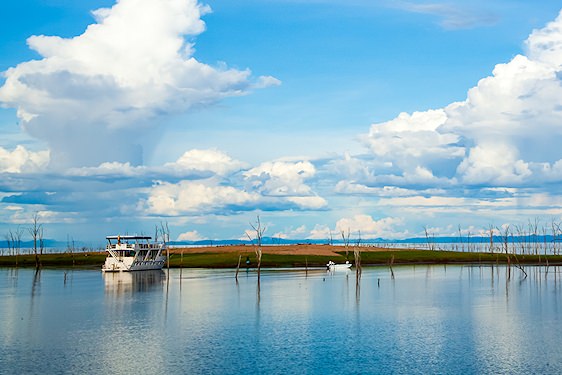 Lake Kariba
Lake Kariba
Lake Kariba is a popular destination for those seeking relaxation and water-based activities.
Zambia vacations incorporate some of the finest off-the-beaten-track safari areas on the continent and the world wonder of Victoria Falls.
Magnificent lakes and several lesser-known national parks make up the other Zambian destinations recommended by African Sky. Zambian tourism is primarily nature-based, with a remarkable diversity of protected areas and some of the unique natural sights in Africa.
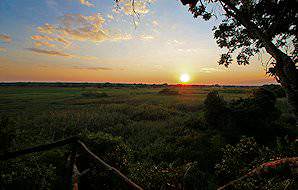
Kasanka National Park is located in central Zambia. It offers one of Africa's most spectacular natural sights from October to December, when around ten million fruit bats descend on a small patch of evergreen swamp forest inside the park. It is where the famous explorer David Livingstone died on his quest to find the source of the Nile River.
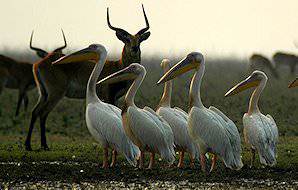
Lochinvar does not have the abundance of large mammals found in Lower Zambezi, South Luangwa, or Kafue. Situated on the Southern edge of the Kafue floodplain, the park does offer 428 species of birds, and you are very likely to see large herds of Kafue lechwe, one of the three species of lechwe found in Zambia.
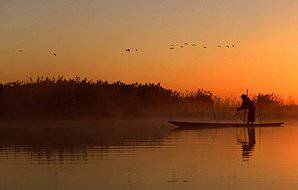
Bangweulu means 'the place where the water meets the sky' - a fitting name for this area of astonishing beauty where it is often hard to tell where the edge of the lake ends and the sky begins when looking out over its massive expanse. The area receives a very high annual rainfall and is normally flooded between November and March.
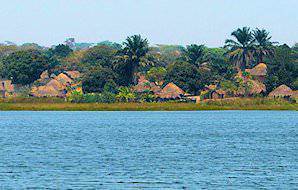
Lake Mweru is a beautiful lake situated in remote northwestern Zambia. It is not a destination for the average tourist. Those who like to wander off the beaten track will be richly rewarded by dramatic beauty and an authentic African travel destination.
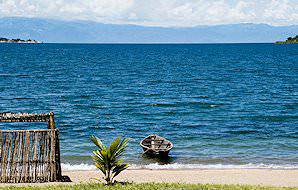
Lake Tanganyika is one of Africa's great lakes. It is estimated to be the second-largest freshwater lake by volume, second only to Lake Baikal in Russia. The accommodations available at Lake Tanganyika range from luxury island lodges to more basic guest house accommodation catering to more budget-conscious travelers. The temperatures in the region are mild, with temperatures in the mid-twenties throughout the year.
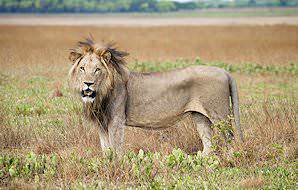
Liuwa Plains in the far western part of Zambia is one of Africa's most unspoiled wilderness areas. The park is best visited from August to December. With the onset of the rainy season in late October, vast herds of wildebeest migrate from Angola. Other antelope common to the park include red lechwe, roan, oribi, and tsessebe. The park also supports a healthy predator population.
Safari Packages that focus on the primary national parks of Zambia and Victoria Falls.
Zambia is a sparsely populated country with a small handful of urban centers. Livingstone is famous for tourism due to its proximity to the world wonder of Victoria Falls. National parks like South Luangwa, Kafue, and Lower Zambezi offer incredible safari experiences.
Zambia is home to pristine, far-flung safari areas where many species that are not common in the other countries of Southern Africa can be seen.
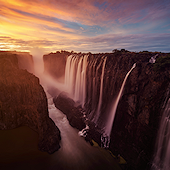
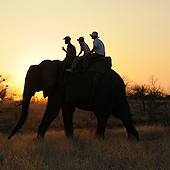
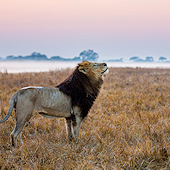
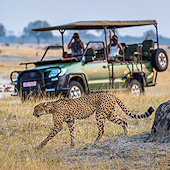
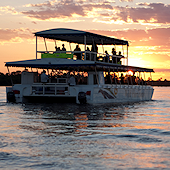
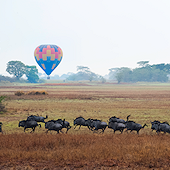
African Sky provided an individually tailored safari experience with great flexibility in response to our energy levels. They provided an effective response to initial e-mail inquiries and a professional level of detail, which is why we booked with them. Mary-Anne is a gem. She was highly knowledgeable, engaging, and infectious in her enthusiasm, and nothing was too much trouble. Her care and rapport were vital to our experience – she was outstanding.
Justin & Adele Rees, UKApart from the hotels in and around the town of Livingstone adjacent to Victoria Falls, most tourist accommodation in Zambia consists of remote tented safari camps and more traditional lodges.
View Camps & Lodges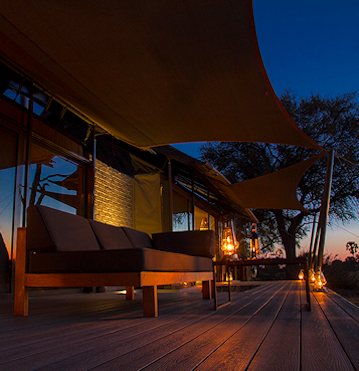
Most safari areas in Zambia host visitors in Tented Camps where no extravagance is spared to make your stay and safari experience on par with the best in Africa.
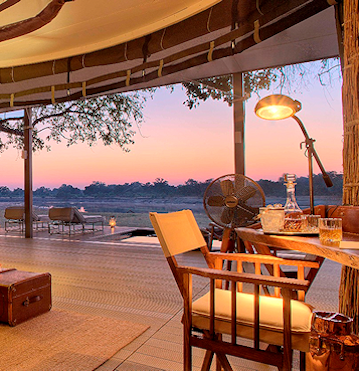
More traditional lodge structures - offer a luxurious stay and first-rate service in some of Africa's remotest and most imposing wilderness areas far from civilization.
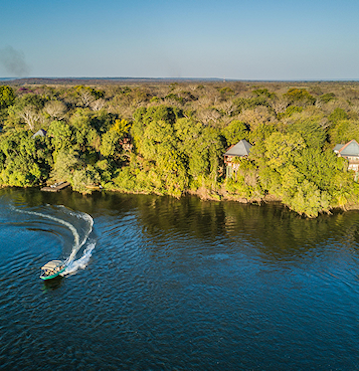
Typically set on the banks of the Zambezi River or one of the islands in the river, these purchases offer sublime views and the opportunity to view different species as they come to drink.
The Zambezi is a symbol of fertility in the region. This great river and its tributaries are the lifeblood of Central Southern Africa, feeding the vast floodplains and marshlands of Zambia, the Caprivi, Chobe, Mana Pools in northern Zimbabwe and even the desert oases of the Okavango Delta in Botswana. It is one of the big four rivers in Africa, and the largest in Southern Africa.
Many peoples have relied on its riches over the ages, both as means of agriculture and as a primary source of food, which is perhaps why current theories on the origin of the river's name point to 'river of fish' as its original meaning. The largest man-made dam in the world, Lake Kariba, is a vital power and water source for Zimbabwe and Zambia, and a favorite holiday destination for many.
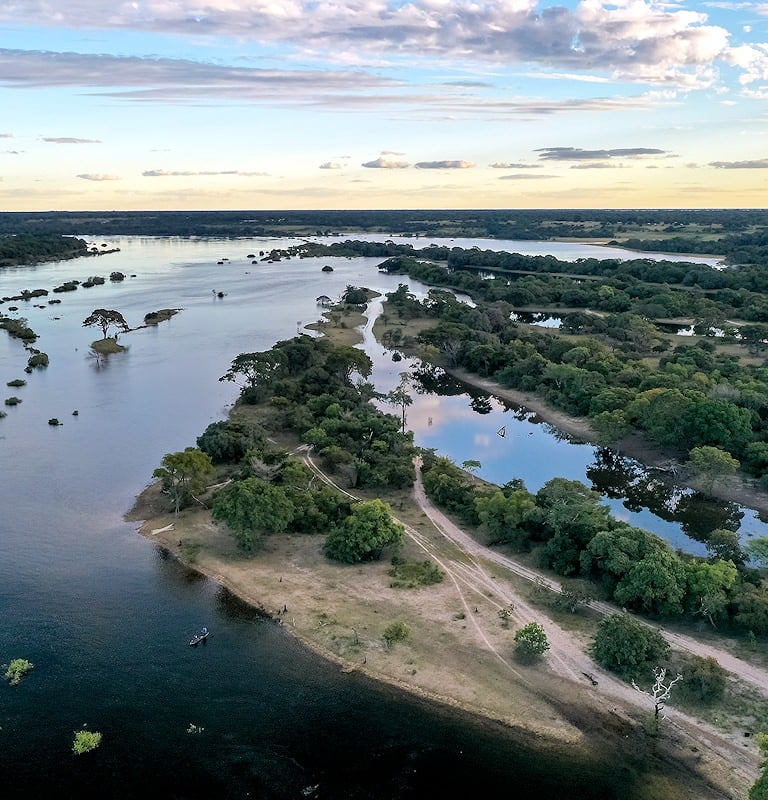
Transportation in Zambia takes many forms. The most typical are overland transfers in air-conditioned minibuses or coaches, which we regularly use for guests visiting Livingstone and Victoria Falls. Unless otherwise stipulated, all these transfers are private. Transfers to and from activities are always included.
Commercial and charter flights are required if you venture further afield - to Kafue, South Luangwa, or Lower Zambezi National Park. Boat transfers are also available but are rare. Should you travel overland, it can be a rather strenuous journey that can only be accomplished in a hardy 4x4 vehicle.
Your comfort and safety while traveling in Southern Africa are paramount to us, and we only ever work with operators and drivers that adhere to our high standards.
Trying local cuisine could add to the uniqueness of your safari in Zambia.
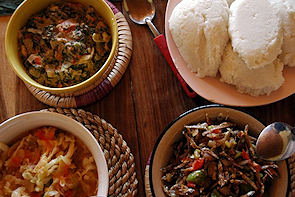
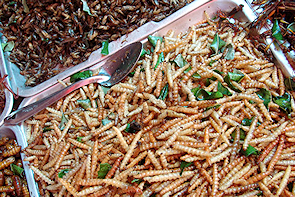


The historic town of Livingstone, the capital of Zambia's Southern province, is an ideal starting point for a safari around Victoria Falls. Botswana's Chobe National Park is also easily accessible from Livingstone. Lusaka is the capital city of Zambia and the choice access point to all of Zambia's major national parks – South Luangwa, Kafue, and Lower Zambezi. Visitors will always require connecting charter flights from Lusaka to the various safari areas, as they are pretty remote and far-flung.
Zambia’s Zambia's general elevation provides it with a more agreeable climate than that experienced in most tropical countries. There are three seasons – cool and dry from May to August, hot and dry from September to November, and warm and wet from December to April. Only in the valleys of the Zambezi and Luangwa rivers is their extreme heat, particularly in October.
The warm wet season prompts substantial humidity. Heavy showers and thunderstorms roll across the land, followed by bright sunshine. Plants flourish, and the rivers and streams replenish almost overnight. During the cool, dry season, evening frost may occur in places sheltered from the wind. The countryside dries up gradually and bushfires, fanned by high winds, are prevalent during this time of the year. Temperatures rise significantly during the hot, dry season, but new leaves appear on the trees before the rains, and fresh grass animates the countryside. The budding period of woodland vegetation, like mopane and miombo, is between August and November.
Most European countries and the UK, Australia, New Zealand, and the United States require visas for entry into Zambia. Conveniently, your visa may be purchased on arrival, or before you depart for Zambia. At the time of writing, a single-entry visa costs 50 USD. Zambia also implements a departure tax of 25 USD for international and 8 USD for domestic flights. It is usually included in airline ticket prices; if not, it is payable at the airport in US dollars.
The entire country of Zambia is considered a high-risk malaria area. A prescription for antimalarial medication should be acquired from your physician before your departure, regardless of which safari area. Remember that antimalarials are not appropriate for small children, and guests wishing to enjoy a family safari would be better suited to opt for one of the malaria-free game reserves in South Africa.
Zambia recently moved off the CDC's 'yellow fever risk' list to 'low potential of exposure.' As a result, a yellow fever vaccination is no longer required. Proof of vaccination is only necessary if you are traveling to Zambia from another country on the yellow fever risk list. None of the countries we include in our safaris and tours fall under this classification.
It is highly recommended that your routine vaccinations are up-to-date. These include MMR, DTP, varicella, polio, and your annual flu shot. Beyond this, be selective of your drinking water. It should, however, not be a significant concern, as the high-end lodges used by African Sky offer complimentary bottled water of an international standard.
The Victoria Falls area (Livingstone) is more crowded than the safari areas, and naturally, urban centers often foster petty crime. Be discreet with your valuables, and should you be traveling with items of considerable value, keep them tucked away in your in-room safe or ask reception to lock them away for you. When visiting bustling markets, like those near the Falls, remain alert and be firm with hagglers.
Avoid approaching or feeding wild animals if you stay at a safari lodge in a national park or wilderness area. Should the lodge be unfenced, refrain from walking around alone at night - typically, lodge staff will always be on hand with a flashlight to guide you safely to your room.
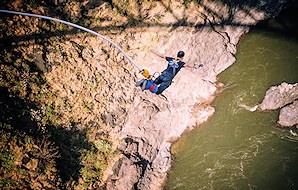
Victoria Falls and the surrounding area offer the visitor a variety of activities from which to choose. These activities range from leisurely river cruises to adrenalin rush activities, like white water rafting and bungee jumping.
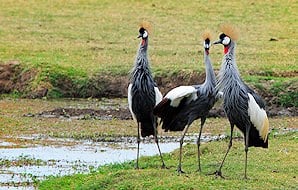
The number of identified bird species in Zambia total 753 - numerous different species if you consider that Zambia is a landlocked country and that the entire country falls within a single biome. Zambia's primary wetlands, including the Kafue Flats, Bangweulu Swamp, and Busanga Plains, are the country's top birding destinations. The seasonal South Luangwa National Park is another prime birding destination.
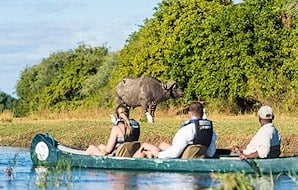
Those who enjoy canoeing are spoiled for choice when visiting Zambia. The most popular canoeing destination is the Zambezi River area close to Livingstone, mainly because it is very easily accessible. However, there are many lakes and rivers where spectacular scenery can be viewed while enjoying your favorite pastime.
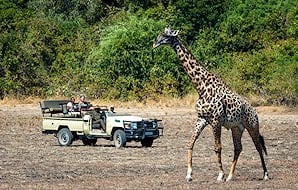
Several established companies offer mobile safaris to most of the national parks in Zambia. These safaris are indeed reminiscent of those enjoyed by the great explorers of yesteryear. It is recommended that you devote at least a week to any mobile safari in Zambia to fully enjoy the experience and the untamed wilderness areas in which these safaris are conducted.
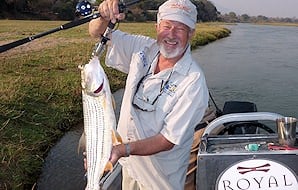
Because of its numerous lakes and large river systems, Zambia is a freshwater angler's paradise. The best fishing spots will require flights in light charter aircraft to remote lodges or overland 4x4 travel over rough terrain. Tiger fishermen favor the upper Zambezi, while most fishermen also dream of fishing Lake Tanganyika at some point in their lives.
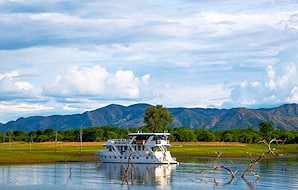
Lake Kariba is the go-to destination in Zambia if a relaxing houseboat holiday is of interest to you. The Zambian side of Lake Kariba is less busy than the Zimbabwean side, the weather is fine, and the prices are pretty reasonable. Whether to book a self-catered and self-operated or fully-catered and crewed houseboat is yours. The best months for a house boating adventure are the winter and spring months, from May to September.
Though not as impressive as Victoria Falls, at 235m (772 ft), the single-drop Kalambo Falls are one of the tallest on the continent. The site is interesting; however, not the waterfall itself, but rather the area's archaeological significance. Archaeologists found evidence of prehistoric fire here. Its association with early Stone Age artifacts sparks a compelling hypothesis that humans had discovered how to make a fire in this corner of Africa some 60 000 years ago. Late Acheulian stone tools, hearths, and well-preserved organic objects were found there, including a wooden club, digging sticks, and evidence of fruit consumption. Tools excavated from Kalambo Gorge have been dated to around 300,000 BC.
The Nsalu Caves also provide fascinating archaeological insight. The national monument contains rock paintings ranging from 2 000 to possibly 100 000 years of age. The older Stone Age designs appear as abstract lines and circles. Though relatively neglected, the site is still worth a visit should you find yourself in the Bangweulu region, which is famous for the small but diverse Kasanka National Park.
Although Zambia has an ethnically diverse background, many of the country's cultures have been blurred by western influences, marriages across tribal groups, and frequent urban migration. However, in some rural areas, cultural practices have remained unchanged for centuries - a prime example being Barotseland in the far west.
Here, the Lozi people maintain a tradition of annual migration to escape the seasonal floods of the Upper Zambezi. The departure of the Lozi king and his entourage is part of the Ku-omboka, Zambia's most spectacular traditional ceremony, which usually takes place in February or March before a full moon.
The Kawaza Village in the Luangwa Valley is home to the Kunda tribe, who migrated from the Luba area in the Congo during the 1800s. Traditionally they were hunters, but most now live as subsistence farmers - a lifestyle constantly at odds with extreme seasons and crop-raiding wildlife.
Although Zambia's official language is English, over 70 dialects of Bantu origin have been identified in at least 16 cultural groups across the country. Bemba, the largest of these, is concentrated around Lusaka and the Copper belt, used in education and administration.
Nyanja is also widespread but more of a universal lingua franca than a traditional language. Tonga is much older and widely used in the Zambezi Valley, while Lozi is confined mainly to the west around Barotseland. Other major dialects include Kaonde, Lunda, Luvale, Nsenga, and Tumbuka.
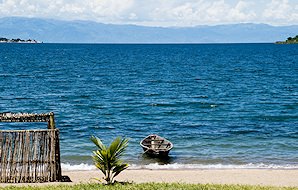
Zambia's water sources define much of the country's landscape. Although much of Lake Tanganyika lies outside Zambia, this 'inland sea' of the Great Rift Valley nicks the country's northern border. Like nearby Lake Mweru, its waters teem with fish, providing a valuable source of protein for local communities.
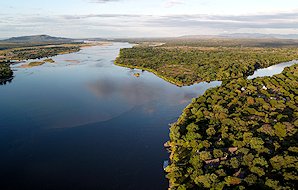
Zambezi River is Africa's fourth longest at 2 650km (1 650 miles), a natural template for Zambia's border with Zimbabwe. Its course from northwest Zambia to the Indian Ocean sprawls across Southern Africa. From the turbulent waters of Victoria Falls to the restrained placidity of Lake Kariba, the Zambezi has many moods.
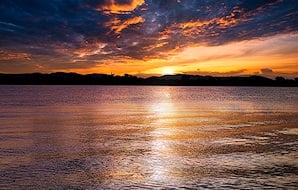
Essentially, the characters of all of Zambia's rivers are influenced by seasonal extremes. Nourished by a vein-like network of tributaries, the Luangwa River and Kafue River pulse and subside in time to flood and drought. Just as the rivers change throughout the year, so do the plains and wetlands surrounding them.